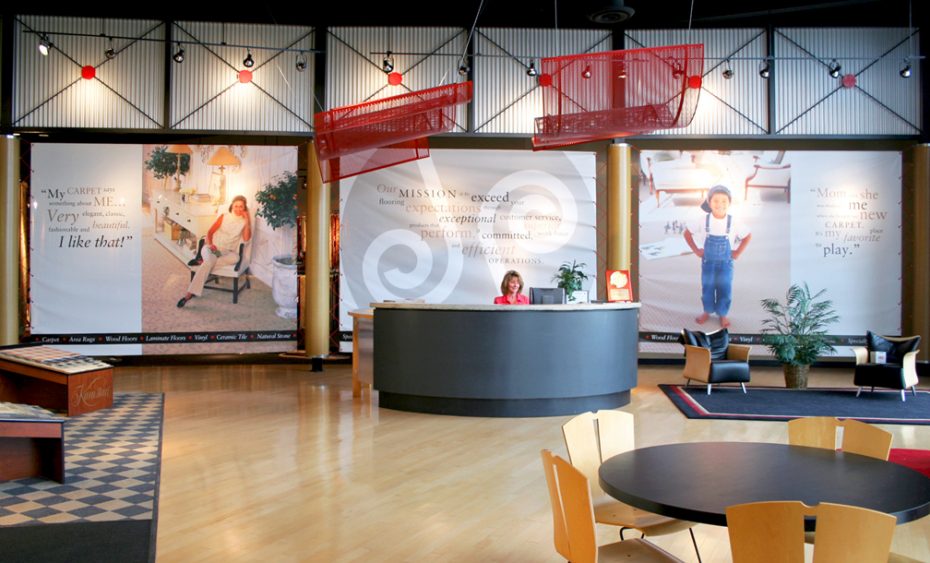 Sometimes, marketers get things backwards—they focus on the product or service rather than the customer they want to buy it. However, when you keep customers in mind and focus on customer engagement, you can make some pretty impressive changes. Think about how the shopping experience has changed over a few short years.
Sometimes, marketers get things backwards—they focus on the product or service rather than the customer they want to buy it. However, when you keep customers in mind and focus on customer engagement, you can make some pretty impressive changes. Think about how the shopping experience has changed over a few short years.
Video and interactive technology have played big roles in how businesses engage with customers, especially in the retail environment. Creative AV installations, interactive displays, immersive experiences, gamification, AR/VR—all these things served to make in-store experiences exponentially more engaging and give customers reasons to seek out the in person shopping experience over sitting behind a computer screen and shopping online.
Consider How Shopping is Changing
There is pretty much universal agreement that the way we collectively shop is changing. And technology is leading that charge. Here are some examples:
- Interactive digital product displays. In January of 2015, Tommy Hilfiger revolutionized shopping by creating a digital showroom. A pioneer in more than fashion, his example paved the way for retail in 2016 and beyond. It’s great for customers, and will be a continued trend because of its focus on sustainability—something Hilfiger holds dear. It reduces duplicate production and eliminates printed orders, significantly reducing the environmental impact of shipping.
- Interactive retail tablets. Engaging with tablets is a natural extension of the customer journey. Rather than using printed media for product research, users can interact with a tablet to easily find what they need. For converged retail, tablets are crucial. They elevate user experience and bridge the divide of online and retail shopping. Kiosks, product creation stations, and simply replacing paper receipts for signatures are a few ways retailers leveraged interactive tech in 2016.
- Interactive dressing rooms. Interactive dressing rooms are a game changer. This technology can recognize the products a customer walked in with and display them on a screen. Mirrors show varying sizes and colors for each, as well as product recommendations. Some dressing rooms have a “call associate” button that connects shoppers with the tablet of a salesperson. Specific lighting and language options create a unique brand experience. Ralph Lauren’s Fifth Avenue store, equipped with interactive fitting rooms, saw an engagement increase of 90 percent since November 2015, when the technology was established.
- Location-based marketing to shoppers’ personal devices. Location-based marketing isn’t new, but as mobile continues to drive marketing, location-based tactics have made huge advances. To make it work, marketers had to create a frictionless interaction with the consumer that was customized and personal—a hard balance. When geolocation features offer a Bluetooth opt-in, customers seem to feel more cared for and less stalked.
- Immersive experiences. When a new Macy’s store used Instagram displays to show real-time social feeds, the retail space became an immersive shopping experience. A great ‘hook’ for the Millennials customer, but sure to impact customers of all ages, shoppers are encouraged to snap pics using different backgrounds and post them to their favorite social media outlets. Such memorable interactions with the brand is not only great marketing for the brand in general, it potentially connects customers in more meaningful, more personalized ways to the brand as a whole.
Digital media and interactive experiences in-store is big. Digital media in public venues—called Out of Home (OOH) advertising—also delivers a powerful punch. In a 2015 Nielsen study commissioned by the Outdoor Advertising Association of America, it was clear that digital display is the future. The report reflected that digital billboards generated high recall for ads and resulted in positive consumer attitudes. Three out of four survey respondents reported seeing a digital ad in the last month and one in four reported seeing one in the last week. Seventy-one percent of respondents reported feeling that digital billboards are more noticeable and memorable than online ads and forty-six percent reported feeling the same way about digital ads compared to TV ads. That’s powerful stuff.
Video, interactive technology, digital advertising and the like all really do just one thing—play to the micro-moments that are such an important part of every customer experience, and make those experiences better ones. To my way of thinking, there’s everything to like about that. What do you think? What are you experiencing as it relates to technology and the retail experience and/or digital OOH advertising? I’d love to hear your thoughts on this.
This article was first published on VDO360.
Photo Credit: White Dzn Studio Flickr via Compfight cc
Chip is the partner and COO at VDO360, a Maryland based company providing Unified Communications (UC) video products to compliment the deployment of UC. With over 20 years as a leader in the industry, his goal is to provide access to cutting edge visual communications products and services for the trade.


Comments
Pingback: New Data Reveals Americans are Conducting Online Searches While Shopping—What That Means for Marketers - Integrated Marketing Association Integrated Marketing Association